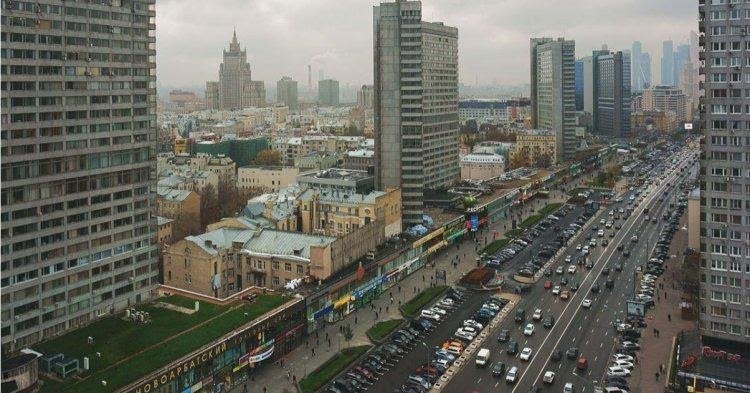The cold war was a war of ‘imitation’. Both the capitalist and the communist sides created many similar organisations, most of the time seemingly to copy each other. When the Federal Republic of Germany was founded in July 1949, the Soviet Union followed suit by creating the German Democratic Republic in the October of the same year. After NATO was founded in April 1949 and the membership of the FRG in 1955 spurred them on further, the communist bloc made the Warsaw pact in May 1955. The same principle was followed in the economic sphere. Because the Marshall plan was launched in 1948, which lead to the creation of the Organisation for European Economic Co-operation (OEEC), the USSR and the ‘people’s democracies’ set up the Council for Mutual Economic Assistance (Comecon) in response.
Just like its western, capitalist counterpart, Comecon’s aim was to facilitate mutual aid between socialist countries. Despite these similar aims, Comecon has been a lot less researched than the OEEC and the European Economic Community (EEC). However, before its dissolution in 1991, it was an organisation with highly complex relationships, surprisingly close to our European institutions of today.
Economic Integration ‘made in Eastern Europe’
We should bear in mind that during Comecon’s first years, its activities were mostly informal: the priority for its founding members (USSR, Poland, Czechoslovakia, Hungary, Romania and Bulgaria) was to rebuild both their economies and their morale after 1945. Soviet victory and the Red Army seizing Berlin gave Moscow a licence to impose Stalinist socialism on the ‘free’ countries of Eastern and Central Europe. However, the USSR had to pay a vast human and economic price for this victory and it was also not ready to support the nascent peoples’ democracies economically.
The period between 1949-1954 was thus an era of establishing commercial relations between countries which had not traded with each other often between the two world wars. A reorganisation of economic exchanges occurred, which helped deepen the East-West division on the European continent — even though more trade was still taking place in each half. This voluntary (although coercive) trade policy was a great success, and intra-Comecon trade more than tripled during this period. These successes lead to a charter being ratified in 1959 that established Comecon and stated that its aim was to facilitate “the harmonious development of economic cooperation between member countries on the basis of the international socialist division of labour”.
This international socialist division of labour became the backbone of Comecon. Each country had to firstly coordinate their five-year plans with their partners in order to achieve their economic development objectives and secondly, specialise in one or several sectors. This imposed specialisation was not easy and in hindsight, it proved disastrous.
Nevertheless, as early as 1961-1962, socialist division of labour was deemed effective enough to draft “Basic principles of international division of labour”. However, the sixties proved to be relatively uneventful for Comecon, and it was not until 1971 that a “complex program” to revitalise the organisation was implemented. This program’s aim was to significantly strengthen economic cooperation by sector merging and major joint industrial projects.
However, it did not survive Mikhail Gorbachev’s Perestroika. The new head of the Kremlin sought to to liberalise the political and economic system, opening a Pandora’s box that had consequences for the entire communist bloc. Comecon was disbanded in June 1991. The incoherence of the specialisation system and the monetary system were also factors in its eventual failure.
Comecon vs. EEC: what do they have in common?
As with the EEC, Comecon added a few new members over the decades: Albania (1949), GDR (1950), Mongolia (1962), Cuba (1972) and Vietnam (1978). Yugoslavia had “associated member” status. Numerous other socialist countries were granted “observer” status. This internationalisation of Comecon demonstrates the apparent attraction of the Soviet model.
On an institutional level, it is evident that the institutions within Comecon are similar to those within the EEC: the Council — the supreme decision making body; the Permanent Executive Committee — made up of ministers from member countries; the International Secretariat — which was lead by a secretary that was always Soviet; and permanent sectoral commissions. In 1963 the International Bank for Economic Co-operation (IBEC) was created, and then the International Investment Bank (IIB) in 1971, which was made to finance multilateral investment. This structure reveals complex interactions and emphasises the importance of bureaucracy in the two institutions.
Like the EEC and later the EU, a specific working culture surfaced as a result of common practice: the international mix of officials and the common usage of the Russian language.
A difference: the importance of sovereignty
A fundamental difference separates the organisations: the priority given to national sovereignty. European integration in the West is based on supranationality (albeit rather reservedly) and a progressive (and slow) abandonment of unanimity in decision-making. On the eastern side of the Iron curtain, none of this occurred. Comecon’s statutes outline the following principles: respect the sovereignty and national independence of each member and the rule of unanimity in every vote. It is thus impossible to detect the emergence of federalism in communist Europe.
Comecon and the EEC: partner organisations
Despite the clash in their ideologies, there were attempts at collaboration between Comecon and the EEC. At first, these attempts were unsuccessful because the USSR did not recognise the EEC, preferring bilateral cooperation. Nevertheless, the relative peace in the seventies made a big difference, as illustrated by the final Helsinki Act in 1975. Soviet politicians understood the advantage of closer relations with the capitalist bloc.
However, the nature of Comecon prevented it from signing international treaties. As a result, each people’s democracy had to deal with the EEC individually. Despite this, at the end of the eighties, there was an increase in trade due to economic and ideological changes in the eastern bloc. In 1988, a declaration was signed in order to obtain better economic, commercial and technical cooperation.
The imposition of a universal economic model
The ‘Soviet colonisation’ of Eastern Europe
Despite its sacrosanct principle of national sovereignty, some consider Comecon to be an obvious attempt by the Soviet Union to impose its ideology and practice systematic economic interference via the presence of Soviet advisors in the people’s democracies. There were also unequal terms of trade between the USSR and its partners, and especially joint enterprises which enjoyed numerous advantages. Because of these factors, Bernard Apremont argued in a 1957 article that Eastern Europe was “colonised by the Soviet Union”. Over the years, commercial dependence on the USSR became deeply entrenched. It had reached the point where Moscow was the main trading partner for every other member of Comecon, but not vice-versa.
Therefore, a highly exploitative system was operating in Eastern Europe that only benefited the USSR, although it diminished in potency after the sixties, which saw increased economic integration.
A prime example of exploitation: energy
The energy sector gives us a good picture of the ins and outs of this complex system of dependency. There are several periods of interest in the development of this reliance: between 1945 and 1960, many natural resources from Central and Balkan Europe (such as Polish coal, East German uranium and Romanian and Hungarian oil) were exported at very low prices to the USSR.
During the sixties, a clear dependence on Soviet hydrocarbons came to light, first oil, then gas in the seventies. Although many socialist states were self-sufficient at the end of the fifties (especially Romania, Hungary and Poland), they became heavily dependent on the USSR during the sixties. The construction of oil and gas pipelines clearly demonstrated the geopolitical imbalances in the socialist bloc. Despite a relative diversification of industry in the affected countries in the late 1970s, their dependence increased in the eighties. It did not even disappear after the fall of the Soviet empire, which laid the foundations for the current energy dependence of Central and Eastern Europe.
It is difficult to get an idea of exactly how strong the USSR’s economic hold was on the countries around it. The archives of the socialist bloc remain incomplete and the writings of many Western analysts have been influenced by ideology. Nevertheless it is clear that the economic links within Comecon were made mostly to assert Soviet power.
Is it necessary to understand Comecon to understand Central Europe today?
The Council for Mutual Economic Assistance, despite its relative longevity and tangible results, has not received the same academic treatment that Western Europe’s integration has. Its dissolution, however, did not close the economic divide between the West and the East of the continent.
Thus, the integration of central and eastern European countries into the EU in the 2000s may have been too late from a political point of view (given the public’s frustration with the slow and imbalanced integration process) but too early from an economic point of view, given the macroeconomic differences between ‘old’ and ‘new’ Europe.
Although Europe’s countries do not agree on everything, knowledge of their economic and social history in the 20th century will help gain a wider understanding of the region’s current dynamics.


Follow the comments: |
|
